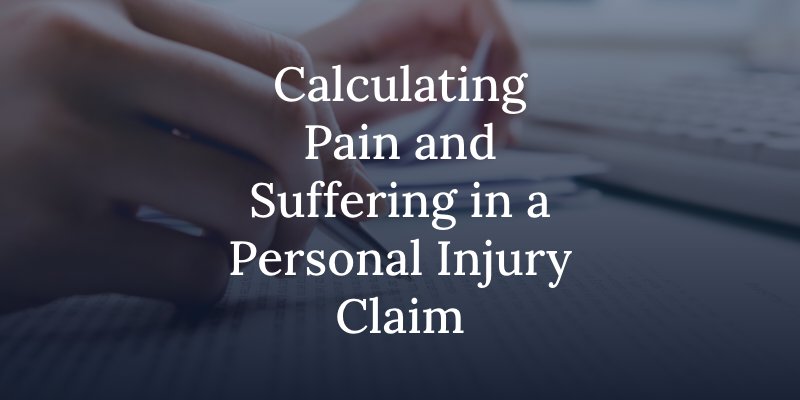How Is Pain and Suffering Calculated?
Pain and suffering refer to the physical discomfort and emotional distress that a person experiences as a result of an injury. It is considered a form of non-economic damages in personal injury cases because it doesn’t have a specific monetary value, unlike medical bills or lost wages.
Pain and Suffering in Legal Terms
In personal injury claims, pain and suffering compensation is meant to acknowledge and provide monetary relief for the subjective, non-financial effects of an injury. This can significantly increase the total compensation an injured person receives beyond their direct financial losses. The challenge, however, is that pain and suffering are difficult to quantify, so courts and insurance companies use various methods, such as multipliers or daily rates, to calculate a fair amount.
Multiplier Method
This is one of the most commonly used methods. The total economic damages (e.g., medical bills, lost wages) are multiplied by a certain number, usually between 1.5 and 5, depending on the severity of the injury. The multiplier reflects the extent of the pain and suffering.
- Minor injuries might use a multiplier of 1.5 to 2.
- Severe or permanent injuries might use a multiplier of 4 to 5.
Example:
- Economic damages: $10,000
- Multiplier: 2
- Pain and suffering compensation = $10,000 × 2 = $20,000
Per Diem (Daily Rate) Method
In this approach, a specific dollar amount is assigned to each day the injured person suffers from the effects of the injury, from the date of the injury until recovery or maximum medical improvement.
The daily rate is often based on the person’s daily earnings, though it can also reflect the severity of the pain and suffering.
Example:
- Daily rate: $150
- Duration of suffering: 100 days
- Pain and suffering compensation = $150 × 100 = $15,000

Lump-Sum Method
Some cases might result in a lump-sum determination, where a judge or jury assigns a flat amount for pain and suffering, considering factors like the nature of the injury, recovery time, and its impact on the plaintiff’s life.
Factors Considered in the Calculation
- Severity of injury: More serious injuries, such as spinal cord injuries or traumatic brain injuries, typically result in higher pain and suffering compensation.
- Duration of pain: Prolonged suffering or chronic conditions increase the value.
- Impact on daily life: Whether the injury affects the ability to work, enjoy activities, or maintain relationships.
- Emotional distress: Including anxiety, depression, PTSD, or loss of enjoyment of life.
Comparative Negligence Rule in Washington
Washington operates under a pure comparative negligence rule. This means that if the plaintiff is found to be partially responsible for their injury, their compensation will be reduced by their percentage of fault. For instance, if the plaintiff is found to be 20% at fault, their pain and suffering award will be reduced by 20%.
For example:
- Total compensation for pain and suffering: $50,000
- Plaintiff’s fault: 20%
- Plaintiff’s award: $50,000 – (20% of $50,000) = $40,000
Washington’s Statute of Limitations
In Washington State, the statute of limitations for filing a personal injury lawsuit is generally three years from the date of the injury. This is important to keep in mind because failing to file a lawsuit within this timeframe can result in losing the right to pursue compensation, including for pain and suffering.
Get Legal Help Today
Since pain and suffering are inherently subjective, different legal jurisdictions and insurance companies may have varying ways of handling these calculations. The role of a Seattle personal injury attorney is to advocate for fair compensation based on the facts of your case.
If you’ve experienced pain and suffering from an injury, you may be entitled to compensation, depending on the facts of your case. At Brumley Law Firm, we are committed to advocating for your rights and pursuing the compensation you may be entitled to under the law. Contact us today at (833) 832-2727 or complete our online form for a free, no-obligation consultation. Let us help you understand your options and guide you through the legal process with care and expertise. We’re here to answer your questions and help you understand your options.